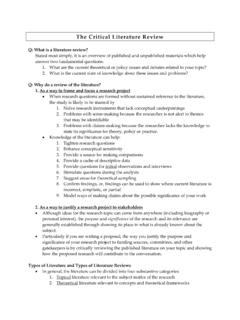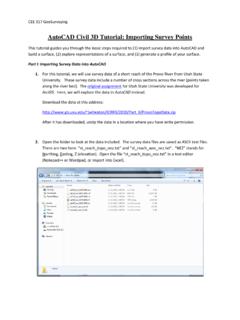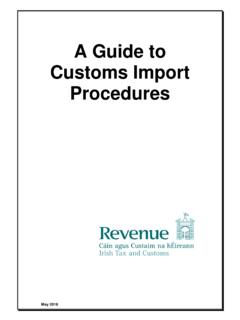Transcription of Importing an Excel or Text Data File into Stata 2018
1 Updated July 2018 Importing an Excel or Text Data File into Stata This set of notes describes how to import an Excel or text data file into Stata . It assumes that you have already installed Stata on your computer, following the Getting Started with Stata handout. It also assumes that you have started Stata up on your computer and are looking at its main screen, on which there is a Stata Results window and a Stata Command box. Some data files that you need for your analysis might not be in a .dta format, such as Excel or text data files. This handout uses the following data file to illustrate how to import data files using the Stata menus. This data file (file name: Example_Dataset ) has three variables ( id , hourly_wage , and state ) and 10 observations.
2 Id hourly_wage state 1 3 MA 2 NY 3 CA 4 CA 5 50 NE 6 HI 7 TX 8 3 TX 9 100 MA 10 OH Excel files (.xls, .xlsx) To import an Excel file ( ) click on File, then on Import, then on Excel spreadsheet. A new window will open. Click Browse and navigate to the folder where the data file you want to use is stored, and then click on Open. You will see a preview of the data file in the Import Excel window. If the first row of your data file contains the variable names, as it does for the Example_Dataset data file, check the box next to Import first row as variable names : 2 If the data set looks okay in the preview box, click OK. The data file will import into Stata .
3 Comma-separated values (.csv) and Text (.txt) files To import a comma-separated values file ( ) or a text file ( ) click on File, then on Import, then on Text data (delimited, *. ). A new window will open. Click Browse and navigate to the folder where the data file you want to use is stored, and then click on Open. You will see a preview of the data file in the Import delimited text data window. Variables might be grouped together in one column. If that is the case, try specifying a different Delimiter from the drop-down menu (the default setting is Automatic ). If the first row of your data file contains variable names, as it does for the Example_Dataset data file, and the variable names are not automatically detected, try selecting a different option from the Use first row for variable names drop-down menu.
4 3 If the data set looks okay in the preview box, click OK. The data file will import into Stata . Saving the data file Once you have successfully imported your data file into Stata , you should save it as a .dta file so it is easier to read into Stata for future analysis. To save your data file, see the Saving a handout.











